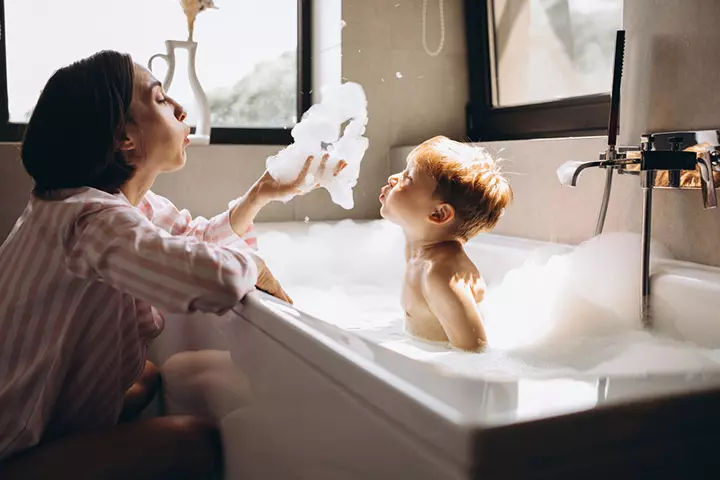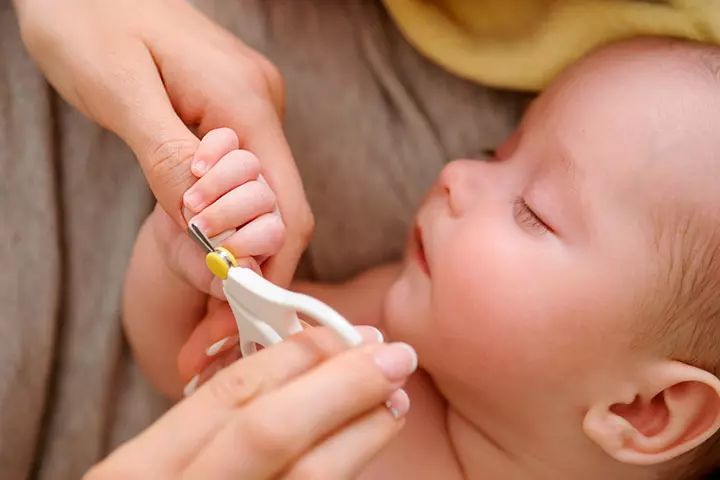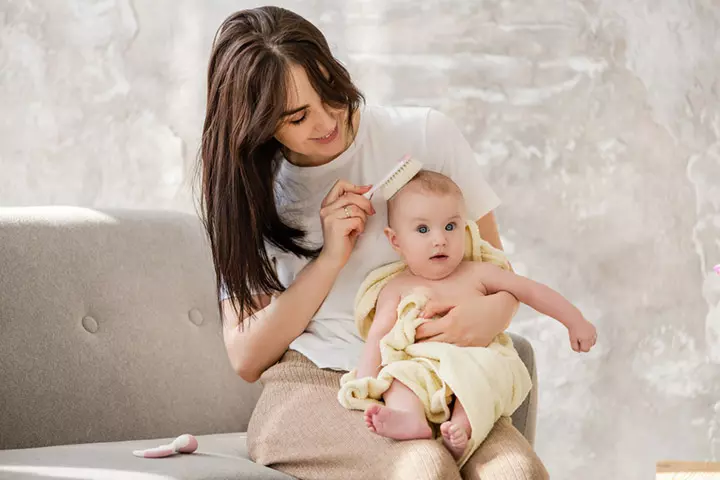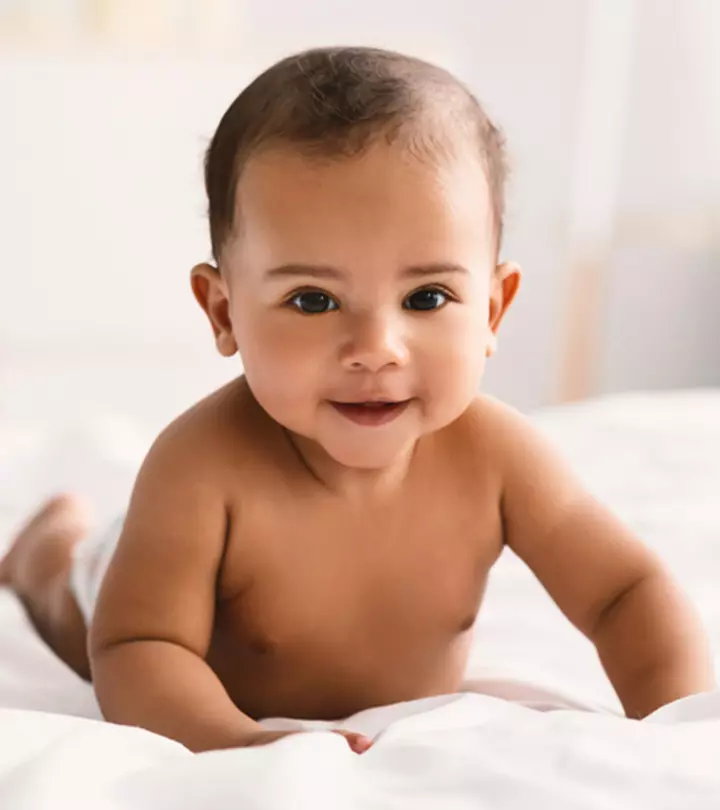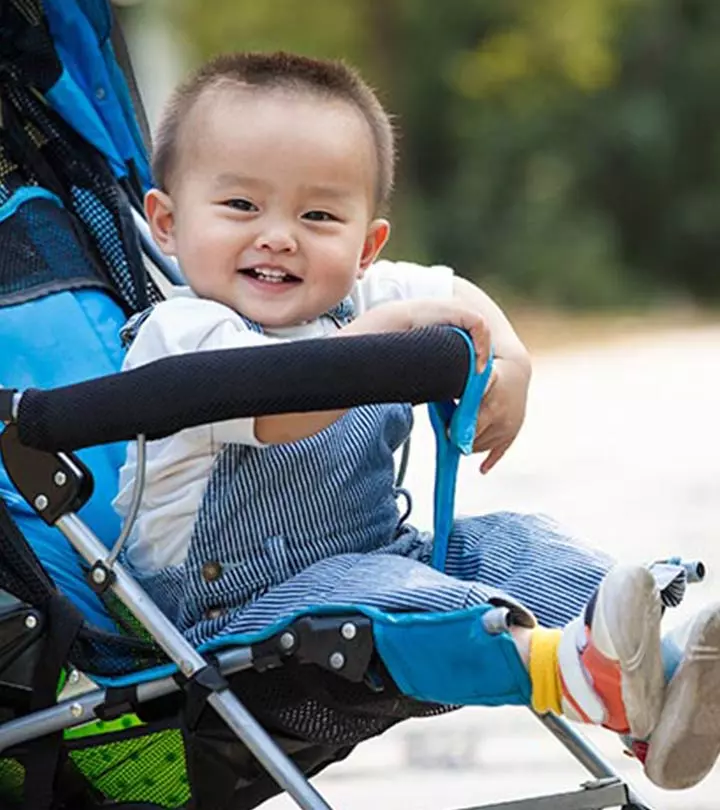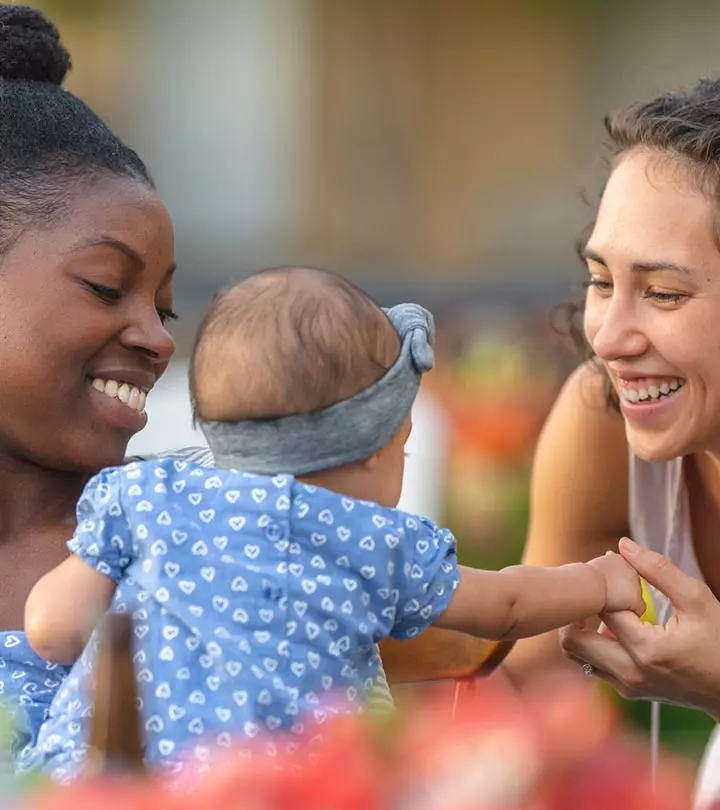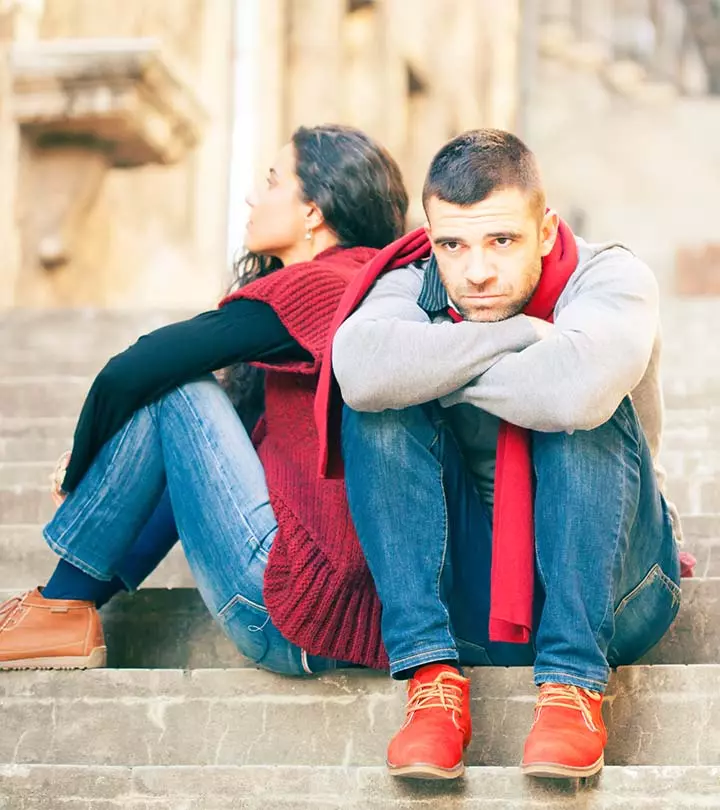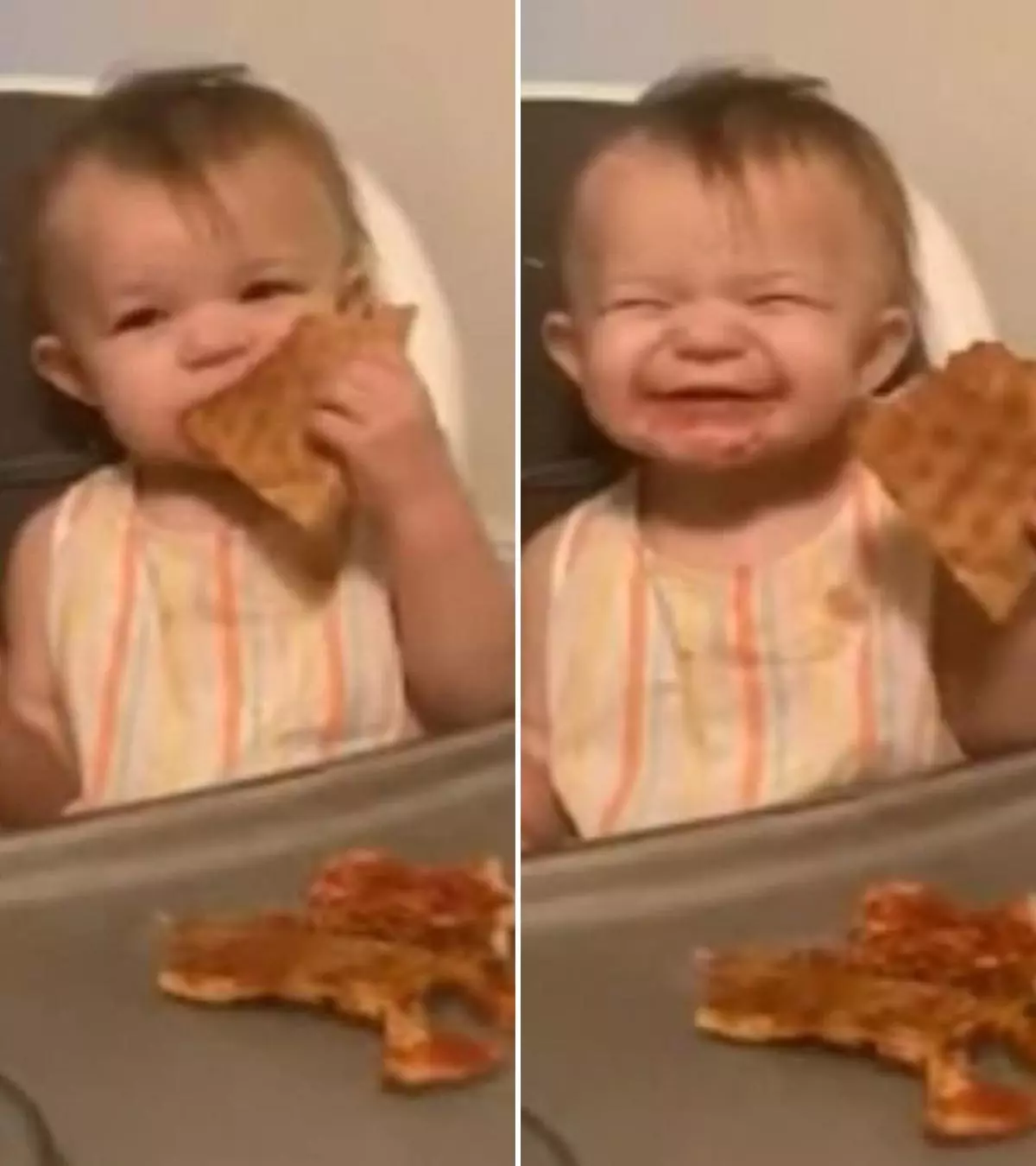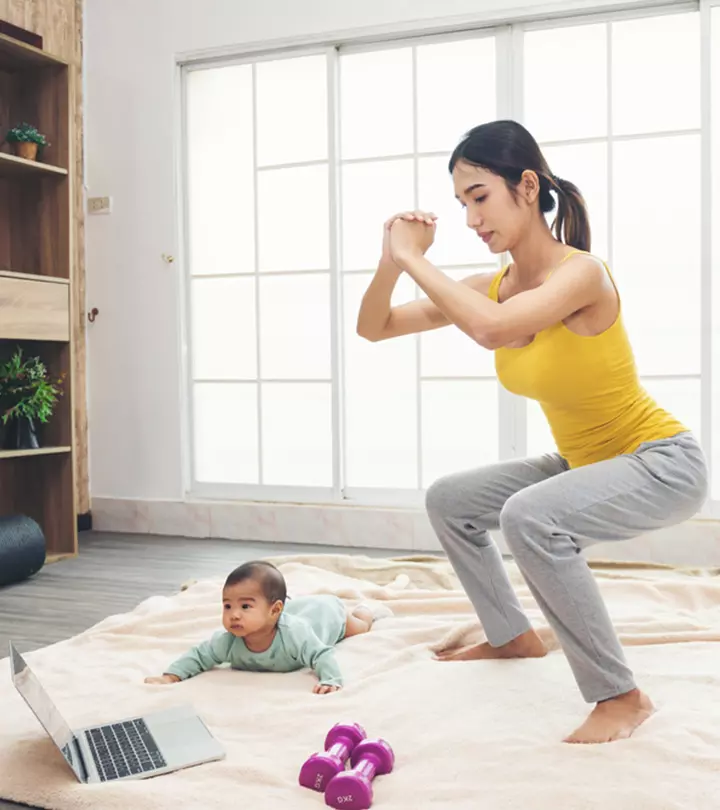

Image: Shutterstock
Babies are beautiful. But tiny babies look cuter and more presentable when clean and well-groomed. All babies are stunning, but a little help can help them stay neat, healthy, comfortable, and let’s not forget, smell great! It can also help you set the right pace for healthy grooming habits right from the infant stage.

The hair, skin, and nails of newborns are sensitive and delicate. So, you might be confused about where to start. If you are a new parent or a parent-to-be who wants to learn about basic grooming techniques for your little one, here are some simple tips to keep in mind:
1. Learn How To Bathe Your Baby
Image: Shutterstock
Many babies love to splish-splash in the bathtub. However, bathrooms or the bath area can often become slippery, making it an accident-prone zone. Follow these bathing tips for your baby to make bathing them easier:
- Bath them for no more than ten minutes. Babies less than a year old should only be in the water for not more than ten minutes. And limit their bathing frequency to once a day only. You can also bathe them every two or three days. Your baby doesn’t dig in the dirt outside, so limited baths are the way to go (1).
- Be careful with the bubbles. Babies love to bathe in the foam, but these are made of chemicals that might cause your baby’s skin to dry out. Instead, you could swap the bubble bath for bathing toys to distract them as these are relatively harmless.
- Once your baby has finished bathing, use a baby cream or ointment to moisturize and protect their skin. Use lotions generously. It will form a barrier between the skin and air and prevent damage.
2. Trim Baby’s Nails With Care
Image: Shutterstock
This can be pretty difficult to master in the beginning. While your baby’s nails are soft, repeated body movements can make it impossible to trim their nails neatly. You’ll have to keep your hand steady if you do it while they are awake. So, stick to their sleeping time to trim nails. Keeping nails short and neatly trimmed reduces the chance of your baby hurting themselves when they scratch themselves. Here’s how cutting a baby’s nails can be done safely:
- Ensure there is sufficient light. You need to be extra cautious while clipping your baby’s nails. So, avoid dark places for extra care.
- Avoid using adult nail clippers. Baby nail scissors are available in the market, and they are specially designed to do an efficient job with safety features.
- Try clipping your baby’s nails when they aren’t moving, that is, when they sleep or after bath. Post bath, your baby’s nails are soft and are easier to cut. Also, it’s good to cut your baby’s nails every week or so.
- Nursing time is a good time too. You can have someone clip your baby’s nails while you breastfeed them. This is a good distraction since your baby will focus on feeding while you can have their nails groomed.
- Filing is a great way to groom your baby’s nails. While this could take longer than clipping, filing is safer as there are fewer chances of hurting your baby.
- Avoid biting your baby’s nails. Biting your baby’s nails will invite more germs as your mouth contains the highest amount of germs. If they get a cut, these germs could transfer to their bloodstream.
3. Hair Care Is Essential
Image: Shutterstock
We love to run our fingers through a baby’s hair, and it’s a pleasurable experience indeed. But, your infant’s hair may need extra care. This can also be tricky because baby hair has slightly different needs than yours. Here are some tips you can follow:
- Cradle cap is common in babies. It causes oily patches on your baby’s scalp, and it gradually goes away in a few weeks after birth (2). Avoid the urge to pick at it. Get treatment for the cradle cap or simply leave it to clear up on its own.
- Trim the wisps carefully for a neat look. This is if your baby has thin hair on the scalp with wisps that fall into their eyes or ears. If your baby has thick hair and you can’t shave it right away due to cultural reasons, keep it tied into a ponytail.
- You need not fear hair loss. Your baby’s hair growth pattern changes with time, leading to some hair loss. Babies with light hair go through a shedding process in the uterus, which results in their birth with less hair in general (3).
Your baby’s nails, hair, and skin are the most sensitive. So, it’s a good idea to ensure they are healthy. Seek help if you notice infections or allergies, and rashes. How do you groom your baby’s hair, nails, and bath schedule? Do let us know your tips in the comments section below.
Community Experiences
Join the conversation and become a part of our nurturing community! Share your stories, experiences, and insights to connect with fellow parents.

